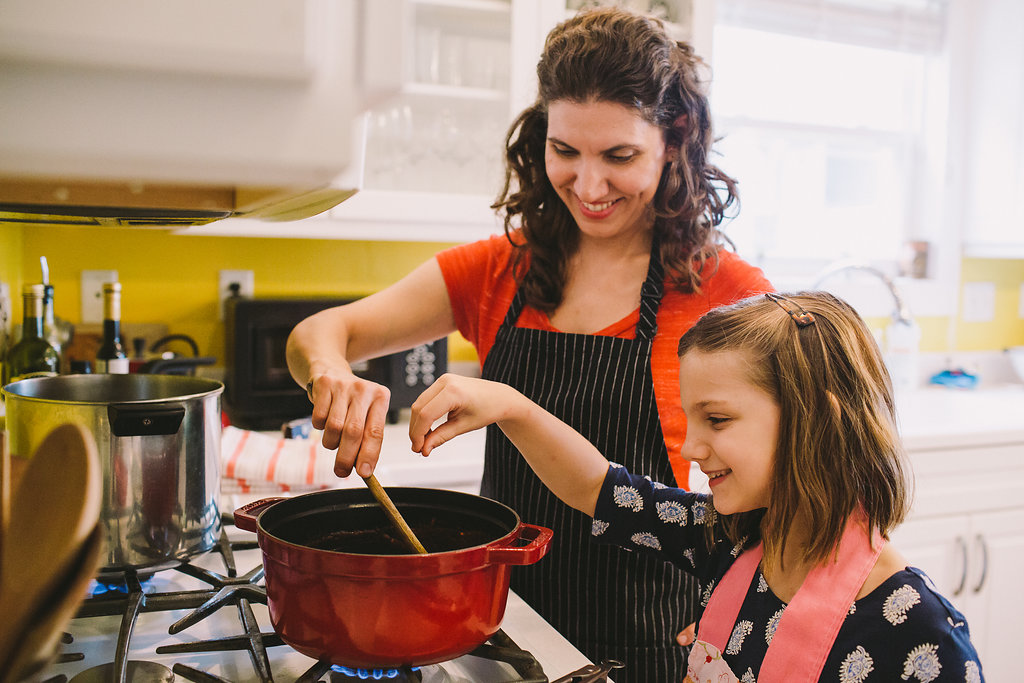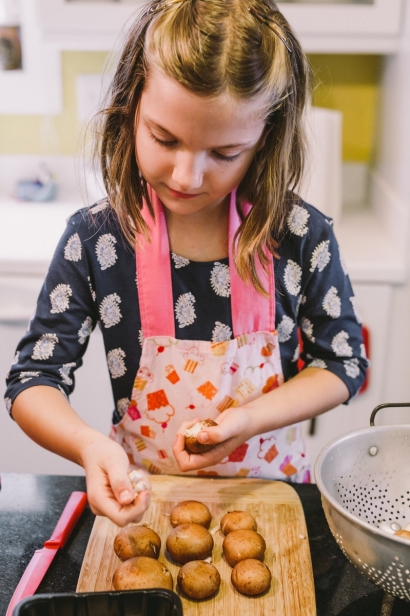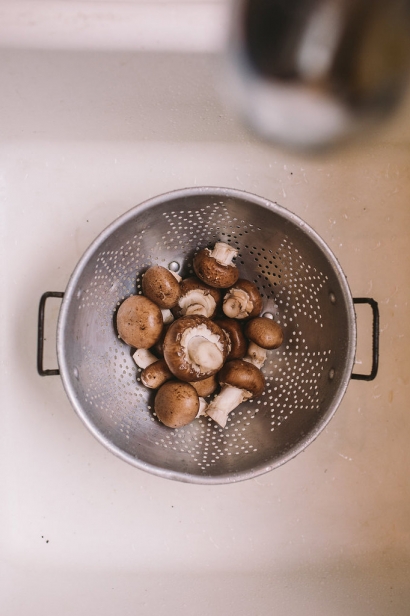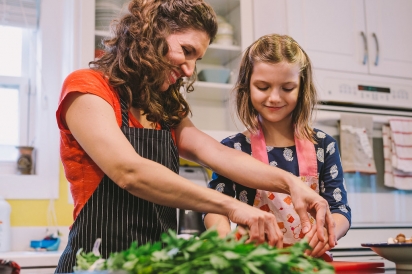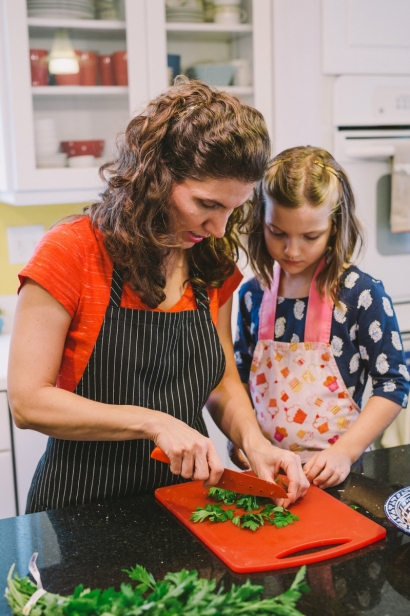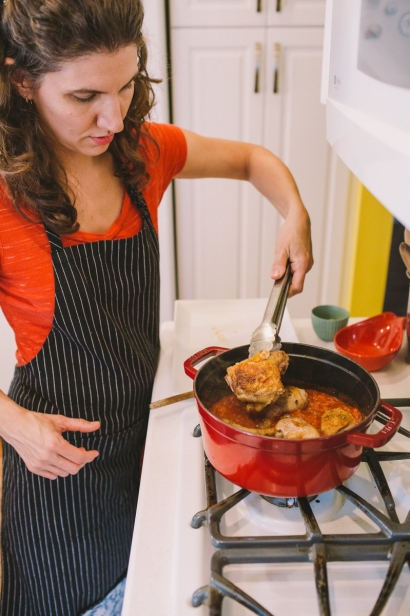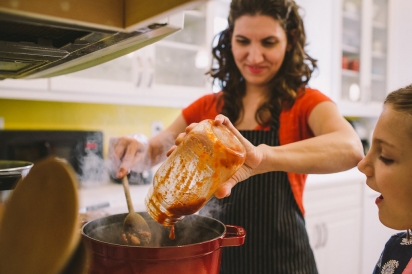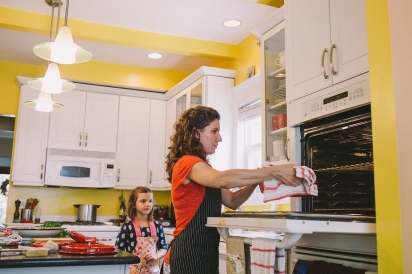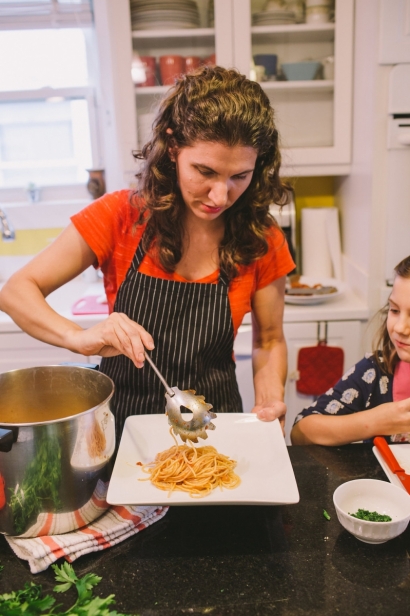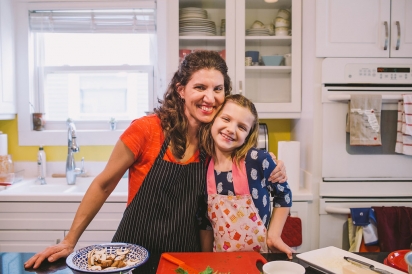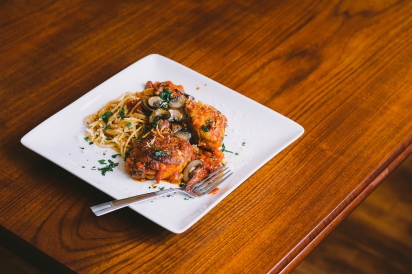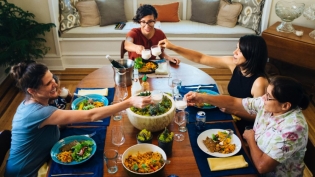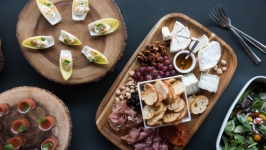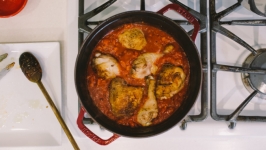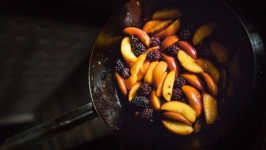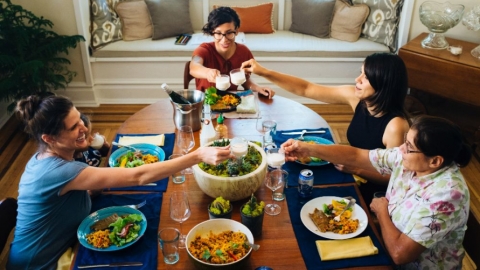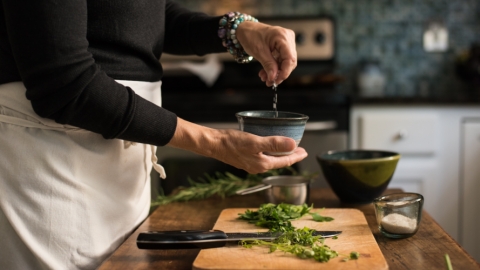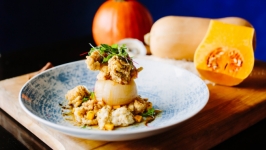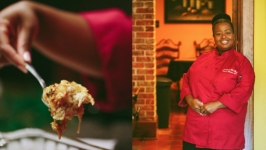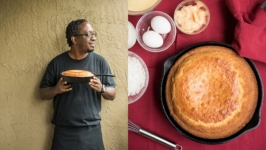Saving Recipes, Saving Traditions
I grew up in a red-sauce joint. Every Sunday in our house, my family enjoyed the ultimate Southern-Italian comfort food —macaroni and gravy. The macaroni, what’s ubiquitously called pasta nowadays, was usually something robust like rigatoni or ziti.The gravy of our Southern-Italian tradition is a hearty ragu (sauce)of tomatoes, garlic, Italian sausage and homemade meatballs with boneless pork ribs melting tenderly into it. But the dish to write home about, the one I would beg my mom to cook when I was winging in from Seattle to Ocala for a holiday visit, was her extraordinary chicken cacciatore. This dish may have as many subtle variations as there are dialects in the Italian language, but it’s always a riff on chicken braised in tomato sauce with garlic, onions and vegetables.
I think what elevated mom’s version beyond weekday chicken dinners was the extra time she took to break down a whole bird into 10 equal parts, the crackling sound and aroma of chicken skin browning in hot olive oil in the Dutch oven, then the slow simmer of garlic,onions and carrots melding into a rich sauce we served over spaghetti.The sweet carrots are what made that sauce sing to me. I thought about asking Mom for the recipe years ago, but it was so tied to home in my mind that I believed it would always be there for me.
My mother cooked these meals from muscle memory, not from a neatly printed recipe. They were written into her story by her immigrant family. When I was a kid, I never thought about the need to take notes in the kitchen. Mom cooked, we set the table and dried the dishes. Italian women can be extremely guarded about their cooking prowess, and unless you’re eavesdropping or watching every move, it’s easy to miss out on the secret techniques or ingredients that make a dish. I didn’t realize how critical it was to pay closer attention until, on a recent visit, I asked Mom to prepare chicken cacciatore for my daughter and me.
When we arrived, I smelled the familiar aroma of the sauce reheating in the kitchen. But when I lifted the lid of the pot to fully inhale the essence, I noticed something was missing — the carrots! My heart sank, not just for the missing ingredient and what it would mean to the flavor of the dish, but for what was beginning to slip away from the forefront of my mother’s mind. Mom sheepishly acknowledged the lapse, but in that moment I knew that something golden would be lost if I didn’t learn this recipe before it completely fades from her memory.
Of her four children, I probably have the most sentimental attachment to my mother’s cooking. I started cooking professionally to pick up all the skills I never learned at home. I showed an interest in helping to bake the Christmas cookies, made my own versions out of Play-doh as a kid and accepted all the hand-me-down cookbooks my mom wanted to toss. I don’t believe Mom thinks there is a legacy in her cooking. She was a nurse for over 50 years, delivering babies and saving lives in the ER, and that’s where her identity is. To honor the tradition I was raised in, I feel compelled to preserve these recipes.
My daughter Stella already speaks of following in my footsteps as a pastry chef. I know she is watching and learning every time we are in the kitchen together. Nowadays, you can Google anything and learn the ingredients and techniques to make a dish, but you can’t replace the love that feeds the tradition of cooking an heirloom recipe and sharing that meal as a family. My daughter is old enough to know that she may not have many more years of getting to know her Grandma. My hope is that keeping this recipe alive will help Stella continue to honor the memories they have made together.


